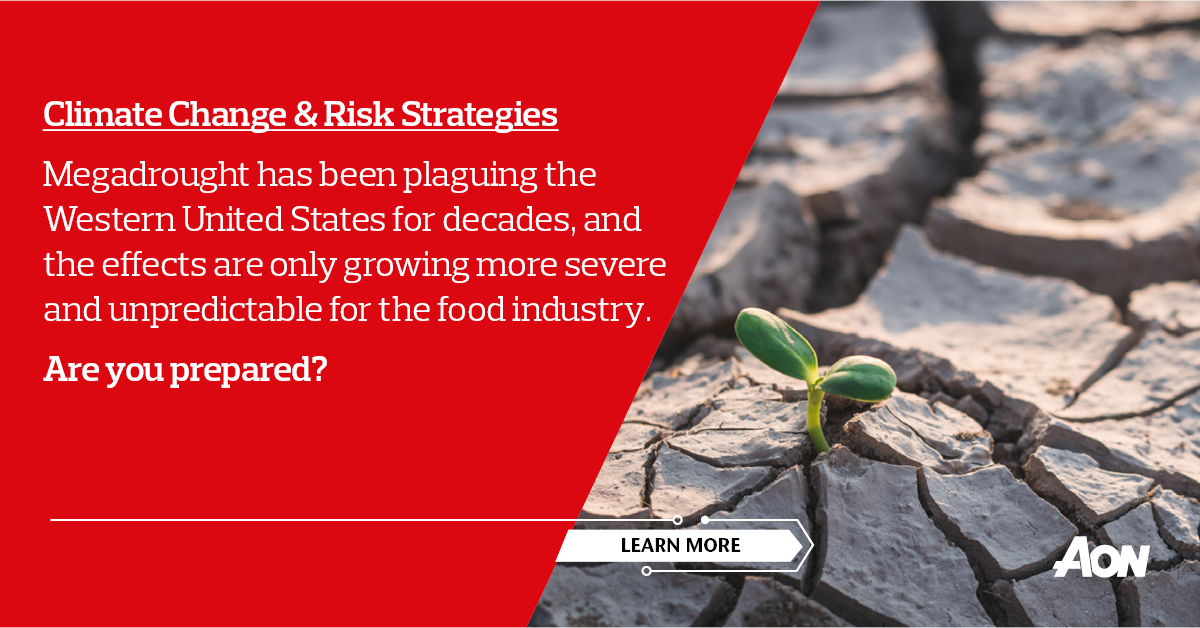
Food Producers Need Better Risk Strategies to Confront Drought, Wildfires, and Heat Waves
Megadrought has been plaguing the Western United States for decades, and the effects are only growing more severe and unpredictable for the food industry.
It has all come to a head this summer, especially in California and the Pacific Northwest, where the combined effects of crippling drought, raging wildfires, and extreme heat have pushed some farmers to the brink of survival.
Many have sacrificed crops with years of productivity remaining because they lack water. Fires have reduced yields, and temperatures of up to 118 degrees in Oregon and Washington’s cherry country cut into both the signature crop and the winter wheat harvest. And ranchers as far away as North Dakota say cattle herds are down up to 25% due to a lack of green grass.
Of course, these industrious businesses aren’t taking thing lying down.
Growers have resorted to creative practices, like hanging nets in orchards to protect fruit from withering in the sun and spraying water vapor above trees. Some pickers started harvesting at 1 am to avoid the scorching heat. Of course, the federal government has also stepped in to expand disaster aid after the record 22 billion-dollar weather events last year and more damage in 2021.
Still, these ad hoc methods often seem like more of a band-aid than a real solution.
Worse still, there is no relief in sight. The two largest reservoirs in the United States, Lake Mead and Lake Powell, both fell to record-low levels this summer, and a staggering 99% of the West has experienced some level of drought.
Yes, the writing has long been on the wall.
But the last few months have cemented the need for companies to start employing more advanced and creative risk management strategies. Climate change strategies have become a must, while impact forecasting models, parametric coverage, catastrophe insight data, risk financing decision platforms, and other solutions all offer powerful tools to help modern companies prepare for these new forms of volatility.
The heat is on for farmers, growers, ranchers, and the industry at large.
Now is the time to adapt to our new reality with risk solutions that work.
To learn even more, download Aon’s report on strategies for “Navigating Climate and Catastrophe Risks and Opportunities."